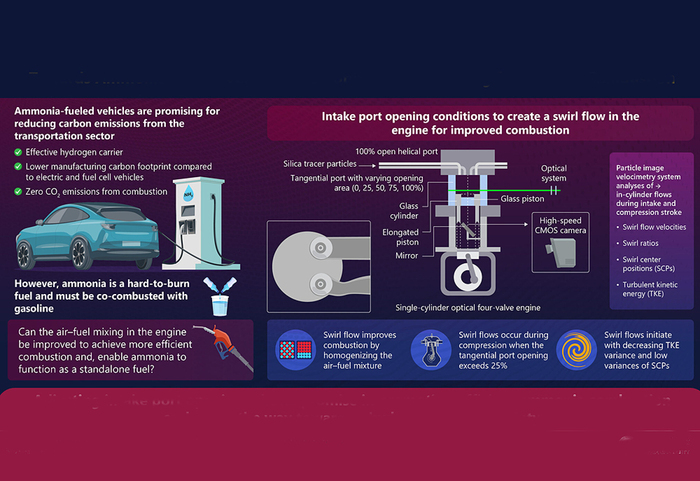News comes from Japan that opens a further window in favor of the survival of combustion engines, which could burn ammonia instead of hydrogen or other 'green' fuels.
The conclusions of this research project, published in the journal Energies, arrive 5 years after the start of the study and experimentation conducted by a team from the Engineering department of Sophia University in Tokyo, led by Professor Mitsuhisa Ichiyanagi.
Thanks to a breakthrough in the operation of internal combustion engine technology, which involves the use of vortex induction, Japanese researchers claim that it is possible to burn ammonia for operation.
What has been obtained is a mixture of air - introduced with a vortex flow into the combustion chamber - sufficient to allow efficient ignition of the ammonia.
Ichiyanagi now believes that ammonia-powered Ice engines could be a practical and cheaper alternative to expensive battery electric vehicles.
"The air flow inside the cylinders - explains Ichiyanagi in the paper - profoundly affects combustion and emissions, emphasizing the phenomenon of air-fuel mixing".
"With the aim of burning only ammonia, we essentially studied the relationship between the engine's intake system and the flow inside the cylinders. It is expected - he said - that the development of vehicles with ammonia-fueled engines will not It will only reduce carbon dioxide emissions from engines, but will also contribute to the realization of a society based on hydrogen energy."
Ammonia is made up of three hydrogen atoms and one nitrogen atom, and is the most produced chemical in the world after sulfuric acid.
Approximately 175 million tons per year are produced globally using 98% fossil fuels such as coal in China and natural gas in the United States.
The ammonia market could reach - according to an estimate by Allied Market Research - around 130 billion by 2030. And a strong increase in the production of 'green' ammonia is expected, which should reach 18 billion by 2030.
Reproduction reserved © Copyright ANSA

